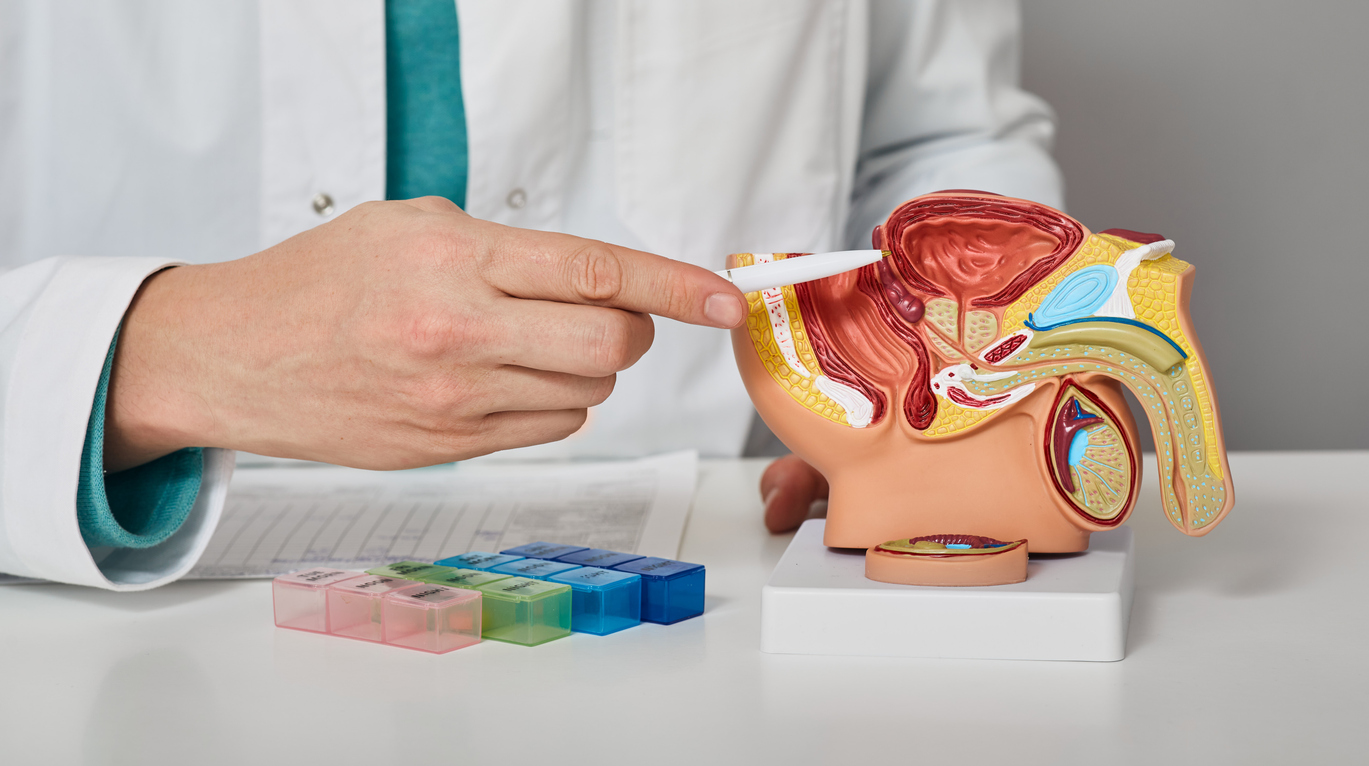2025-11-21
Prostate cancer: could physical exercise be the key to regaining an active sexual life?
Urology-nephrology Oncology
Sexual dysfunction is a common side effect of prostate
cancer treatments, impacting patients’ quality of life well beyond the acute
phase of disease. Despite pharmacological progress, current therapeutic
approaches often fail to sufficiently address the physical, psychological, and
relational components involved. This highlights the need for more holistic
strategies, particularly through structured physical activity and psycho-sexual
education.
The randomized trial presented here evaluates the
impact of a supervised exercise program, with or without a psycho-sexual and
self-management intervention (PESM), on sexual function in men undergoing or
having completed prostate cancer treatment. The primary objective was to assess
effects on erectile function using the IIEF score, with secondary analysis of
changes in body composition, muscle strength, and functional performance.
What clinical benefits can exercise realistically
provide for sexual function after prostate cancer?
A total of 112 men (mean age: 66.3 years) were
randomly assigned to three groups: exercise alone (n=39), exercise + PESM
(n=36), and usual care (n=37). The exercise program consisted of three
supervised weekly sessions for six months, combining resistance training and
moderate-to-high intensity cardiovascular exercise under the supervision of an
exercise physiologist. The PESM group also received cognitive-behavioral
support, educational audio/written material, and individualized management
plans.
Erectile function, measured via the IIEF score,
increased by 3.5 points in the exercise group compared with usual care (p =
0.04), exceeding the minimal clinically significant improvement threshold of 4
points. The effect was particularly pronounced in patients treated with
radiotherapy or androgen deprivation therapy (ADT), compared with those who had
undergone prostatectomy.
Other domains of sexual function (libido,
satisfaction, sexual activity) also showed positive trends, although not
statistically significant. Notably, patients with the lowest baseline scores
experienced the greatest improvements, suggesting increased benefit among those
with severe dysfunction.
Physically, exercise led to:
• A reduction in fat mass (−0.9 kg; p = 0.02),
• Improved upper-body (+9.4 kg) and lower-body muscle
strength (+17.9 kg) (p < 0.001),
• Improved functional capacity, including chair rise
performance (−1.8 s; p = 0.002).
The addition of the psycho-sexual component (PESM) did
not produce significant improvement compared with exercise alone. This suggests
that the intensity or structure of the intervention may have been insufficient
to yield measurable short-term effects.
Integrating exercise into supportive care
This study demonstrates that structured physical
exercise is an effective and clinically relevant intervention to improve
erectile function and sexual satisfaction in men treated for prostate cancer.
While theoretically valuable, PESM did not enhance the effects of exercise in
the specific format tested.
Limitations include a modest sample size (the study
ended before reaching the initially planned 240 participants), single
geographical location (Western Australia), and possible selection bias due to a
motivated and functionally capable study population.
Looking ahead, it seems essential to:
• Include exercise in standard post-treatment care
recommendations for prostate cancer,
• Tailor programs to baseline severity of sexual
dysfunction,
• Explore more intensive or personalized psycho-sexual
education formats,
• Raise clinician awareness of sexual recovery as an
integral part of cancer survivorship.
Integrating physical activity into care pathways
represents an accessible, non-pharmacological, and effective approach to
supporting sexual quality of life in prostate cancer patients.
Last press reviews
Digital rectal exam in prostate cancer screening: time to rethink its role?

By Carolina Lima | Published on November 20, 2025 | 3 min read<br>
Prostatectomy or SBRT: which treatment better preserves quality of life?

By Lila Rouland | Published on November 20, 2025 | 3 min read<br>
